VinMotion's humanoid robots attracted attention at the inauguration ceremony of the National Exhibition Center on August 19. Currently, VinMotion's robots are capable of performing basic operations such as walking, waving, and interacting with gestures.
VinMotion said that in the first phase, robots will be deployed in VinFast 's manufacturing plants to support component transportation, quality inspection and repetitive operations on the assembly line.
If you want to know about the application of humanoid robots, you can look to the two leading developed countries, the US and China. In particular, China's robot industry is developing rapidly, and humanoid robots are also being focused on.
As part of a comprehensive industrial transformation strategy, robots are seen as a key factor in sustaining domestic manufacturing amid rising labor costs, an aging workforce and geopolitical tensions.
The company that developed the humanoid robot is funded by the Chinese government . Thanks to the integration of AI, the robot can perform some human-like operations such as holding objects, moving, interacting in natural language and recognizing faces.
 |
Humanoid robots race at the "Robot Olympics" held in Beijing, China, in mid-August. |
Serving production and warehousing
Founded in 2023, AgiBot has emerged as one of China's promising robot startups. Its flagship product, the AgiBot A2, is designed for a variety of fields such as logistics and high-intensity manufacturing.
The software is the highlight of AgiBot with the ability to recognize real-time speech, grasp context, recognize faces and read lips. Thanks to the AgiBot World training platform, the robot can learn separate operations and tasks in real-world environments.
According to Reuters , AgiBot’s training facility on the outskirts of Shanghai (China) includes dozens of robots, controlled by humans for tasks such as folding T-shirts, making sandwiches and constantly opening and closing doors. Operating for 17 hours a day, the activities help the company collect data to train robots more effectively.
 |
A corner of AgiBot's factory in Shanghai (China). Photo: AgiBot . |
The Chinese government has invested more than 20 billion USD in the field of humanoid robot development by 2024. The country also established an investment fund of about 137 billion USD to support startups in robotics and AI.
Some analysts predict humanoid robots could follow the trajectory of electric cars, with production costs plummeting thanks to companies entering the market and government support.
According to Bank of America Securities , the average cost of materials for a humanoid robot is about $35,000 by the end of this year, but could fall to $17,000 by 2030 if most of the materials are sourced from China. For comparison, the cost of components for Tesla's Optimus robot is currently about $50,000-$60,000 .
Earlier this year, startups AI2Robotics and Jingneng Microelectronics partnered to develop smart robots for semiconductor factories. These robots use Embodied Intelligence, a term for the integration of AI into physical entities to give them the ability to perceive, learn, and interact with their environment like humans, in addition to thinking independently and using tools.
 |
UBTech's humanoid robot carries items at the Zeekr electric vehicle factory. Photo: SCMP . |
At Jingneng’s factory, robots like Alpha Bot can help with lifting and loading, with an arm that can carry up to 5 kg and has an accuracy of 1 mm. They can perform long, complex tasks such as loading wafers and replacing consumables.
MagicLab, another humanoid robotics startup, said its focus on improving the robot's "brain" has helped the company develop production-line prototypes that can perform quality inspection, material handling and assembly.
Acrobatics and dancing
Unitree is also a prominent name in the field. In March, the company released a video showing its G1 robot performing a backflip, becoming the first robot in the world to do so.
Thanks to its good balance, G1 can walk on a horizontal bar, jump poles and carry heavy objects. Moving on complex terrain with few contact points requires the ability to calculate precise foot placement and steady movement.
 |
NOETIX N2 robot demonstrates its backflipping ability. Photo: NOETIX . |
NOETIX's N2 is also capable of backflips. The manufacturer says it can train the robot in just three weeks using AI algorithms. With constant trial and error, the robot can find ways to improve in a short time.
Similarly, AgiBot's Lingxi X2 humanoid robot integrates three main functions: locomotion, interaction, and operation.
Thanks to its good balance, the robot can ride a bike, ride a scooter, and stand on a skateboard. The device is also capable of more complex operations such as grasping, placing objects, and even sewing thread into grapes.
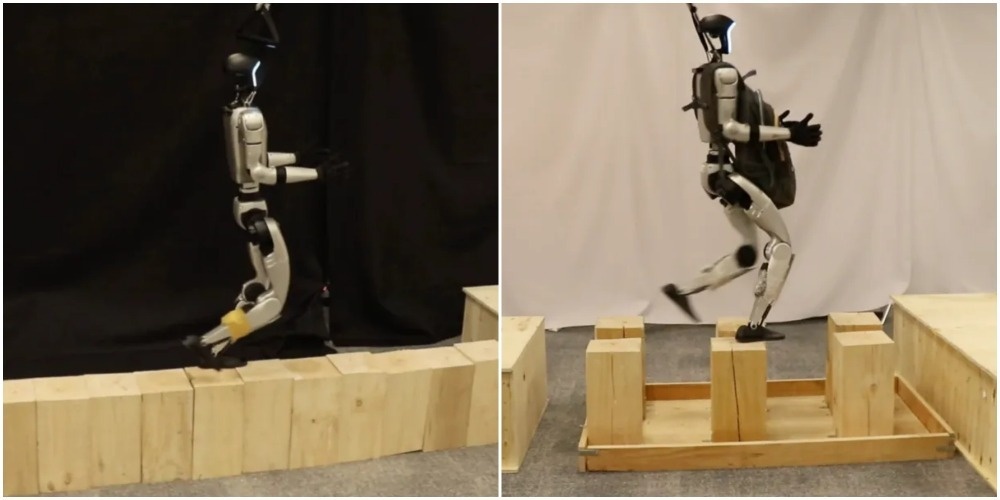 |
Unitree G1 robot demonstrates balancing, carrying objects and jumping over poles. Photo: Our China Story . |
Linxi X2 is equipped with Gui Guang Dong Yu language model, which can capture emotional state by analyzing human facial expressions, voice and respond immediately. This experience helps to increase naturalness, closeness and realism.
In March, AgiBot also launched its Genie Operator-1 (GO-1) general-purpose artificial intelligence model. Unlike traditional models that require huge training datasets, GO-1 can help robots learn skills with just hundreds of data samples, helping them master skills such as pouring water or baking bread by watching videos of people practicing.
Sports competitions
Recently, companies have demonstrated the flexible mobility of humanoid robots through robot-specific sports competitions.
Named Humanoid Robot Games, the event took place in Beijing (China) in mid-August, attracting 280 teams from universities and private companies in 16 countries.
In some competitions, robots repeatedly do somersaults, move over obstacles and rough terrain. In soccer, robots perform poorly, often tripping and colliding with each other despite being only the size of children.
In kickboxing, robots wearing gloves and helmets struggle to throw punches. After a few minutes, the referee announces the winner. The robot raises its arms to cheers from the audience, while its opponent lies down in defeat.
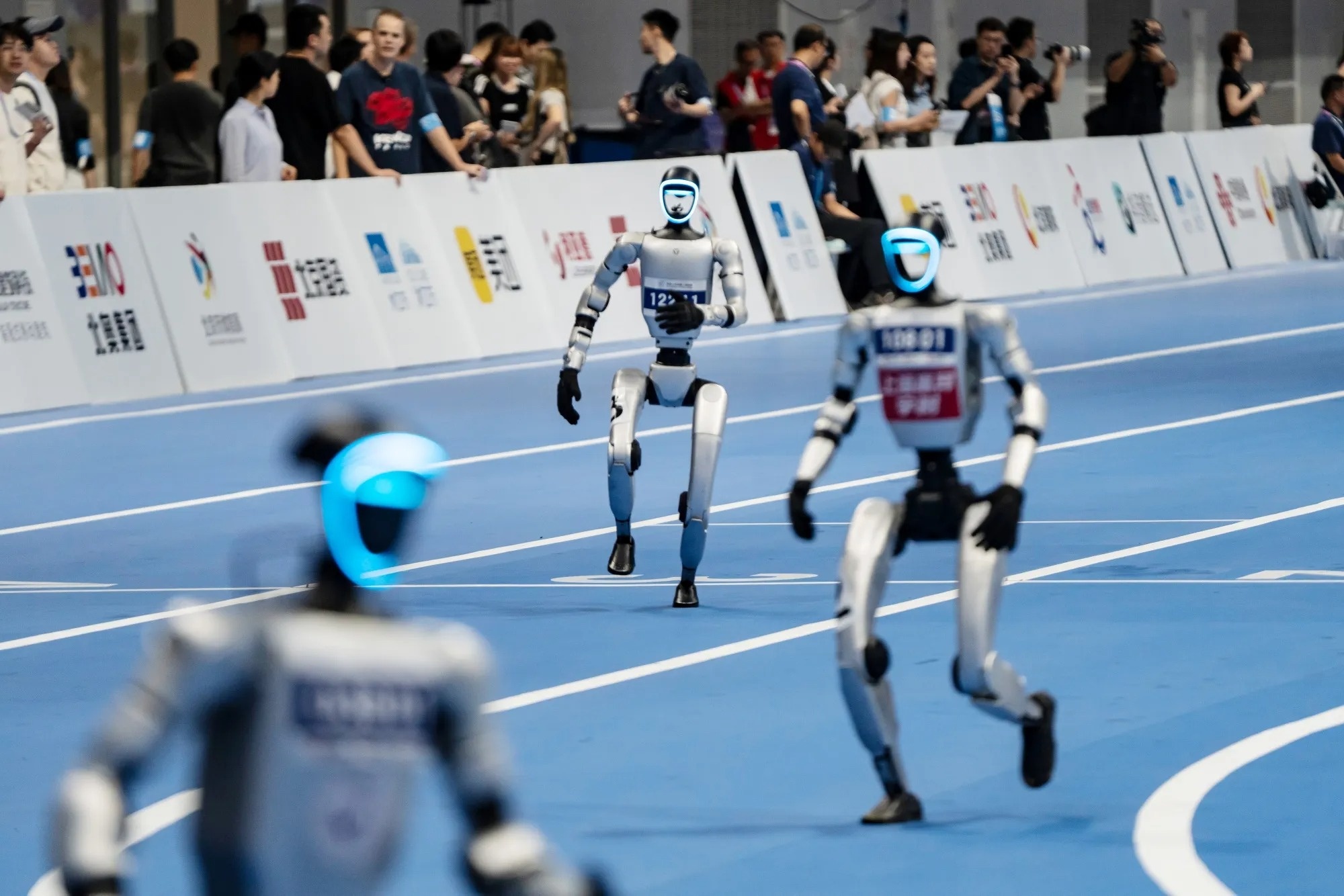 |
Robots participate in the 1,500m race. Photo: Bloomberg . |
According to the New York Times , the event is the latest large-scale robot display in China. Previously, a team of humanoid robots performed folk dances in front of hundreds of millions of television viewers on New Year's Eve. In April, the Beijing city government organized a half-marathon with 12,000 runners and 20 humanoid robots.
Responding to Chinese media, government officials said the Humanoid Robot Games is a place to demonstrate and test advances in robot technology.
“Despite their clumsiness, robots are making significant advances in their ability to move and balance, including backflips, flips, somersaults and martial arts,” said Ken Goldberg, a professor of robotics at the University of California, Berkeley.
Unitree's robot won the gold medal in the indoor 1,500m race with a time of 6 minutes 34.40 seconds. According to Professor Goldberg, this is an impressive speed. Although slower than the record holder in the same event (Jakob Ingebrigtsen with 3 minutes 29.63 seconds), he said that this time is still faster than many amateur runners.
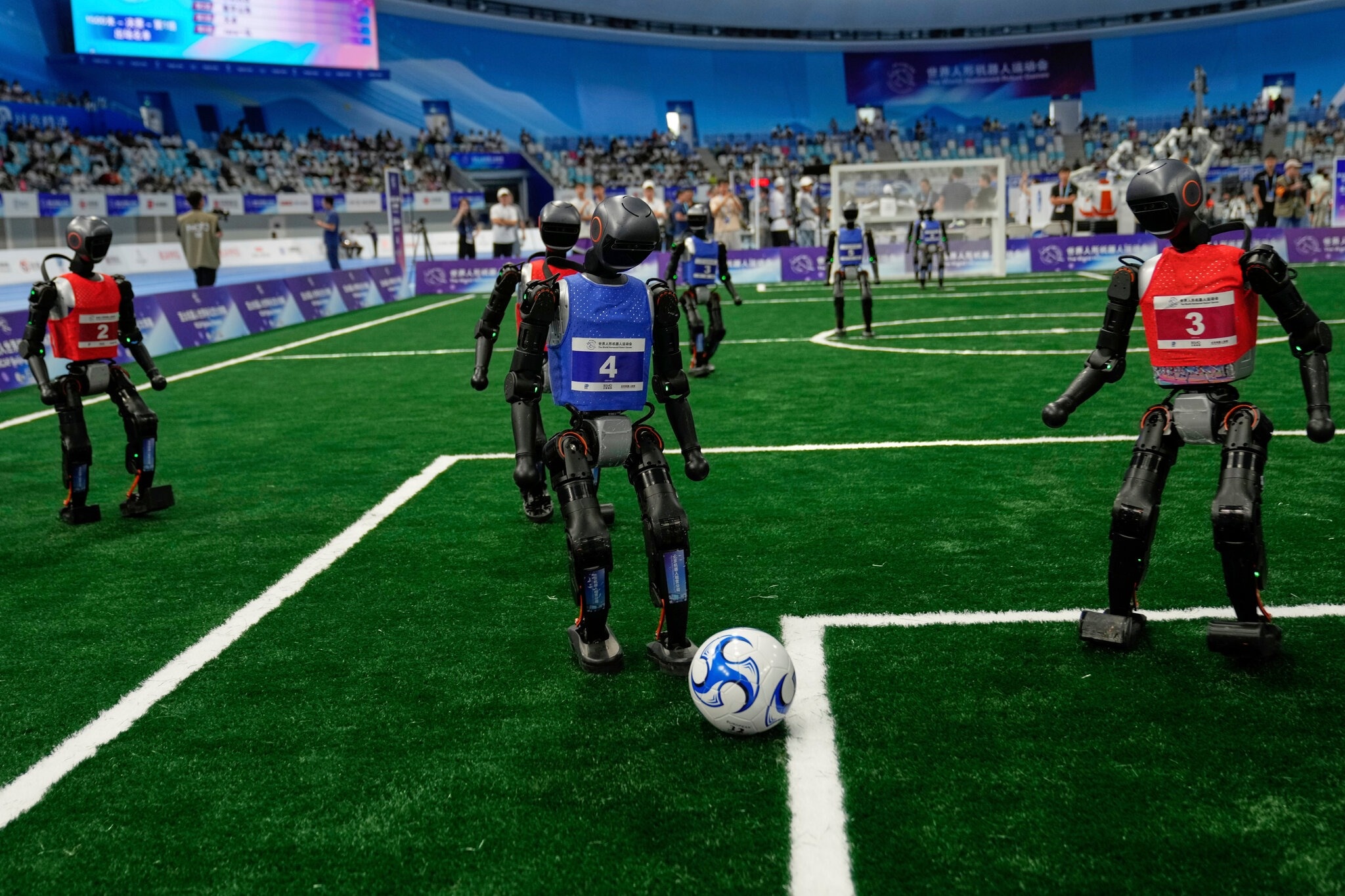 |
Robots participate in a soccer match. Photo: New York Times . |
Some entrepreneurs believe that humanoid robots will be able to take over many of the jobs that humans currently do, such as housework, warehouse supervision, and factory labor. However, that prospect is still quite far off, as they are still not proficient at basic tasks like loading the dishwasher.
Alan Fern, a robotics professor at Oregon State University, said the recent event in China underscores advances in robotics. First, humanoid robot production has advanced to the point where researchers don’t need to pay as much to buy or build robots as they did a year or two ago.
Second, advances in AI allow machines to take on more basic tasks. “Five years ago, it was rare to see a humanoid robot that could walk steadily, let alone run, jump, or move over rough terrain,” Professor Fern emphasized.
Source: https://znews.vn/robot-hinh-nguoi-da-lam-duoc-gi-post1578509.html


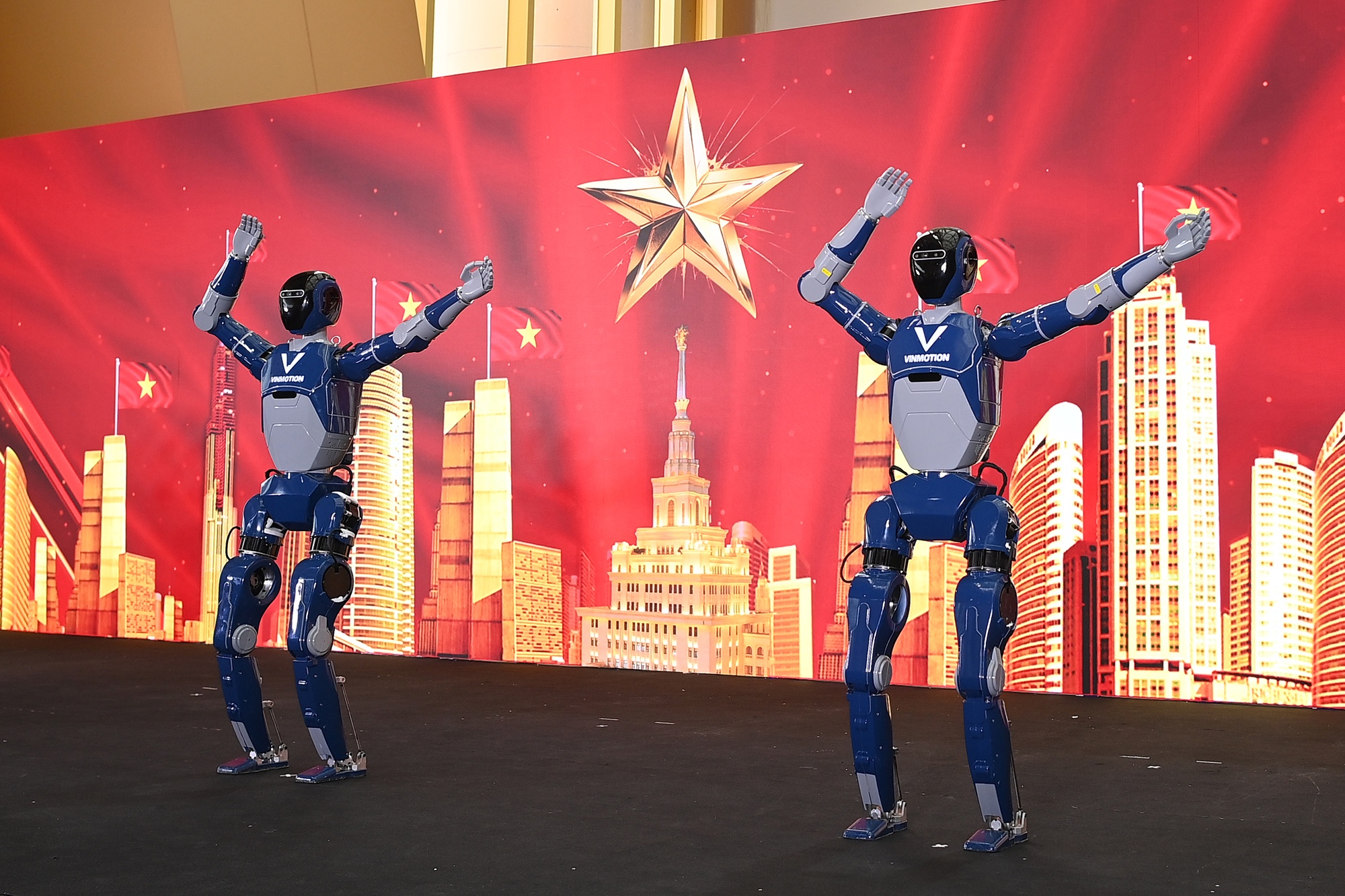






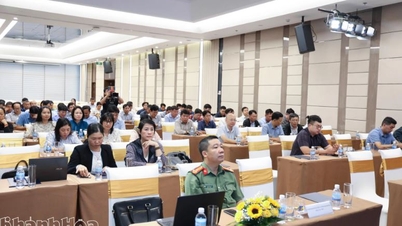






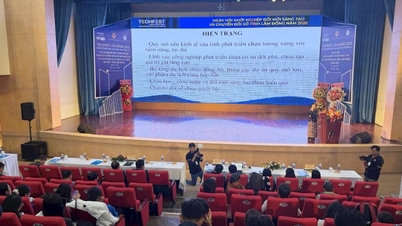



















![[Video] The craft of making Dong Ho folk paintings has been inscribed by UNESCO on the List of Crafts in Need of Urgent Safeguarding.](https://vphoto.vietnam.vn/thumb/402x226/vietnam/resource/IMAGE/2025/12/10/1765350246533_tranh-dong-ho-734-jpg.webp)













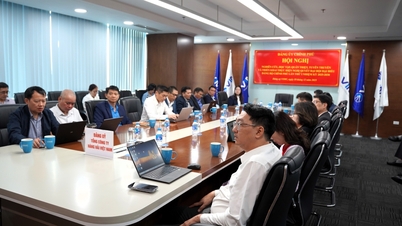











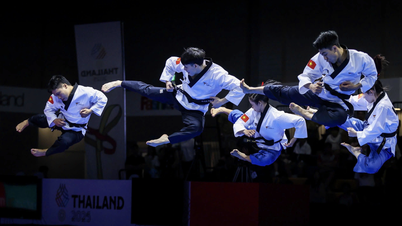









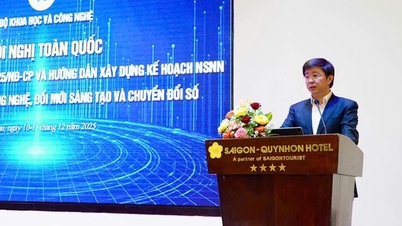































Comment (0)